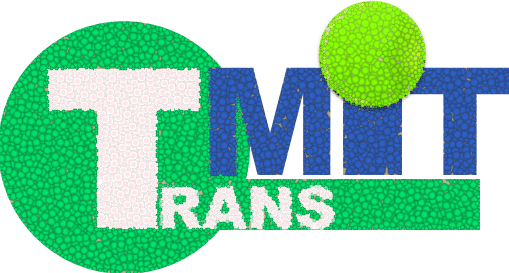3D Visualization
-
Visual communication to control route choice behaviorThe individual choice of transport modality and route depends on a number of factors. In particular, information about the expected traffic situation is considered important. It should therefore be examined whether the mediation of the current and the anticipated situation on site (including the indication of certain securities) leads to the choice of a different route or even a different modality.Team:Year: 2018Funding: DFG-Graduiertenkolleg SocialCars
![]()
![]()
Big Data and Machine Learning
-
RainCarsThis idea would be easily technically feasible if the cars are provided with GPS and a small memory chip for recording the coordinates, car speed and wiper frequency. This initial research will explore theoretically the benefits of such an approach. For that valid relationships between wiper speed and rainfall rate (W-R relationship) are assumed and derived from laboratory and field experiments. Different traffic models are developed to generate motorcars on roads in a river basin. Radar data are used as reference truth rainfall fields. Rainfall from these fields is sampled from the conventional rain gauge and dynamic car networks. Areal rainfall is calculated from these networks for different scales using geostatistical interpolation methods and compared against truth radar data. The car sensors can be considered as a geosensor network. It allows to measure and process information locally in a decentralized way and thus has benefits with respect to scalability, which is crucial when large areas have to be covered with large amounts of measurement units.Team:Year: 2017
![]()
![]()
-
TransMIT - Resource-optimised transformation of combined and separate drainage systems in existing quarters with high settlement pressureIncreasing heavy rainfall events and growing urban districts pose great challenges for urban drainage. Using three neighbourhoods in the cities of Braunschweig, Hanover and Hildesheim as examples, it will be shown how urban development and water management aspects can be linked in the long term in neighbourhood planning.Led by: Dr.-Ing. M. Beier; Prof. S. Köster, ISAH; Prof. Sester, ikgTeam:Year: 2019
![]()
![]()
Laser Scanning
-
TransMIT - Resource-optimised transformation of combined and separate drainage systems in existing quarters with high settlement pressureIncreasing heavy rainfall events and growing urban districts pose great challenges for urban drainage. Using three neighbourhoods in the cities of Braunschweig, Hanover and Hildesheim as examples, it will be shown how urban development and water management aspects can be linked in the long term in neighbourhood planning.Led by: Dr.-Ing. M. Beier; Prof. S. Köster, ISAH; Prof. Sester, ikgTeam:Year: 2019
![]()
![]()
Mobility
-
Visual communication to control route choice behaviorThe individual choice of transport modality and route depends on a number of factors. In particular, information about the expected traffic situation is considered important. It should therefore be examined whether the mediation of the current and the anticipated situation on site (including the indication of certain securities) leads to the choice of a different route or even a different modality.Team:Year: 2018Funding: DFG-Graduiertenkolleg SocialCars
![]()
![]()
-
Deep learning of user behavior in road space - particularly in shared spacesThe project aims to investigate the behaviour of different road users in unregulated spaces, i.e. spaces open to all road users. Existing approaches are based on a given movement model, which describes the individual behaviour as well as the interactive behaviour of different road users.Team:Year: 2018Funding: DFG-Graduiertenkolleg SocialCarsDuration: 2014-2023
![]()
![]()
-
Traffic Regulator Detection and Identification from Crowdsourced DataMapping with surveying equipment is a time-consuming and cost-intensive procedure that makes the frequent map updating unaffordable. In the last few years, much research has focused on eliminating such problems by counting on crowdsourced data, such as GPS traces. An important source of information in maps, especially under the consideration of forthcoming self-driving vehicles, is the traffic regulators. This information is largely lacking in maps like OpenstreetMap (OSM) and this research is motivated by this fact.Team:Year: 2020
![]()
![]()










